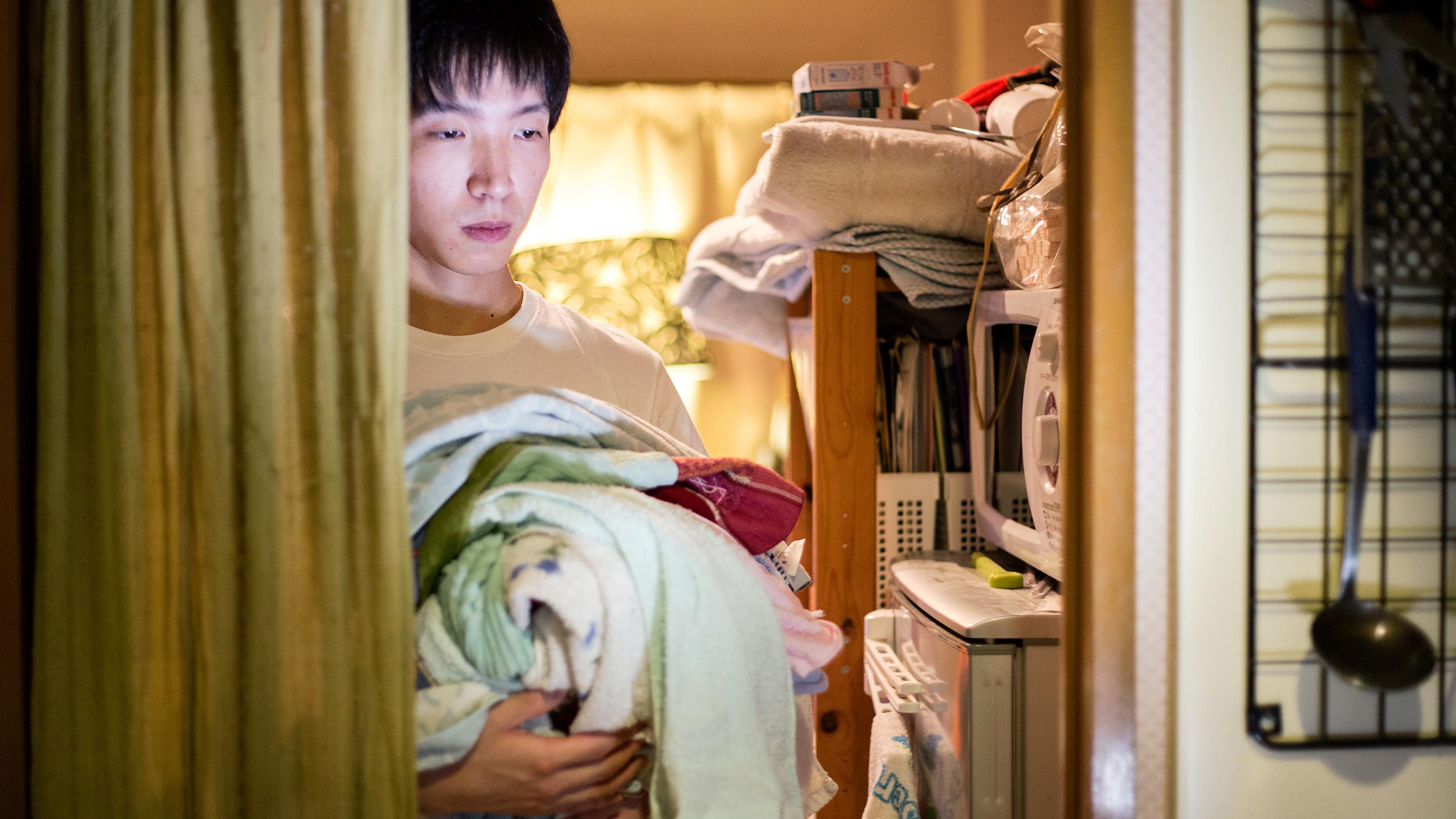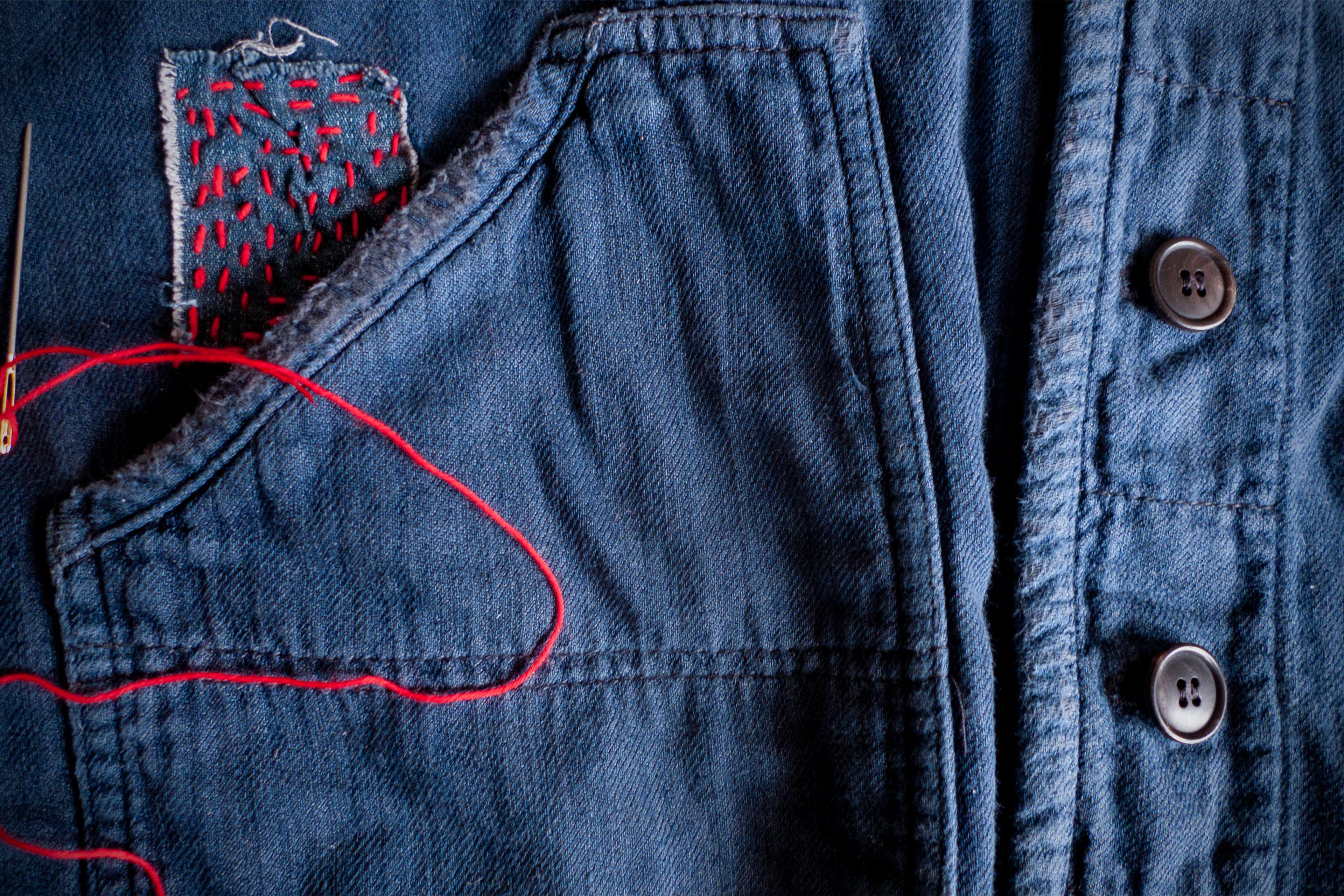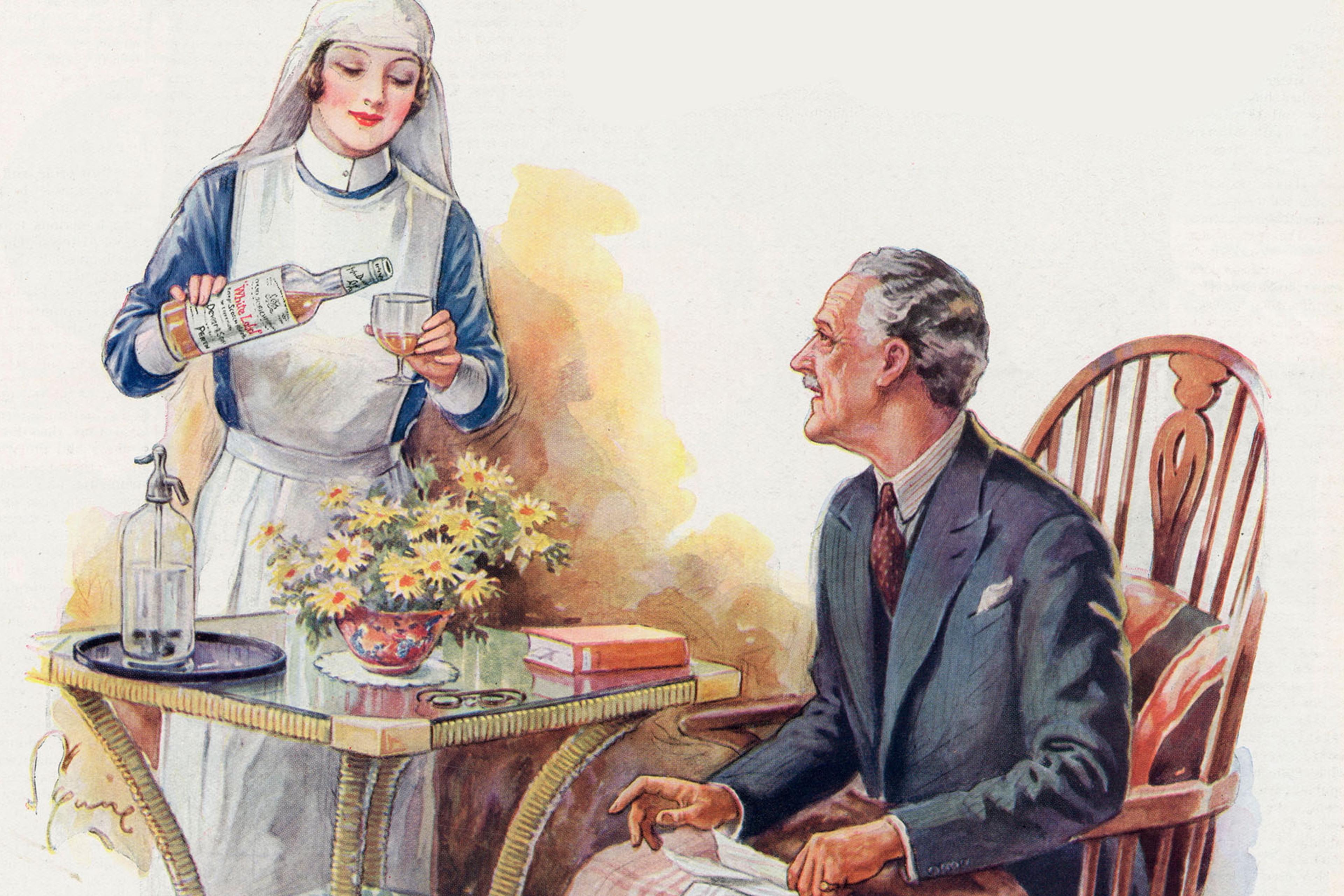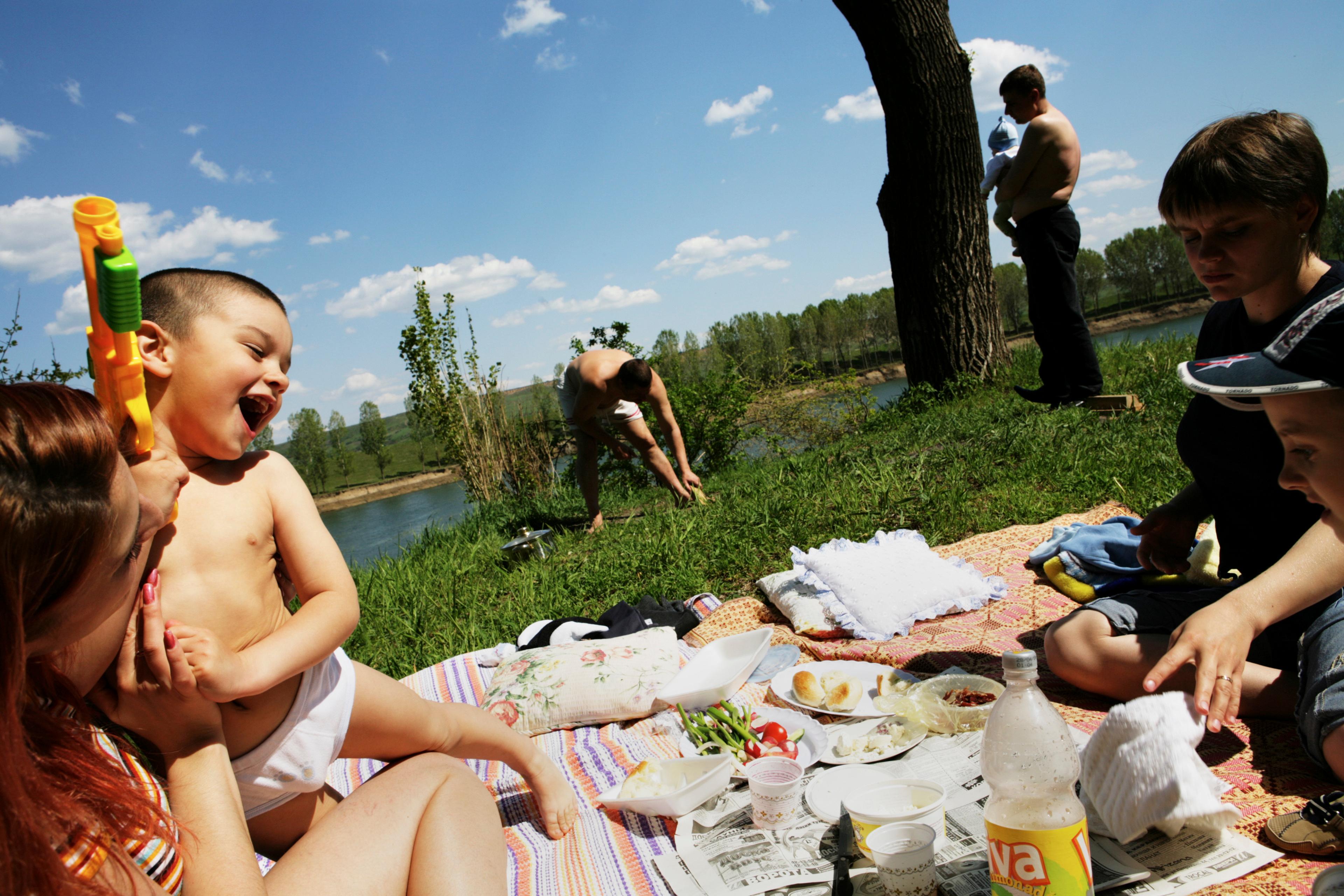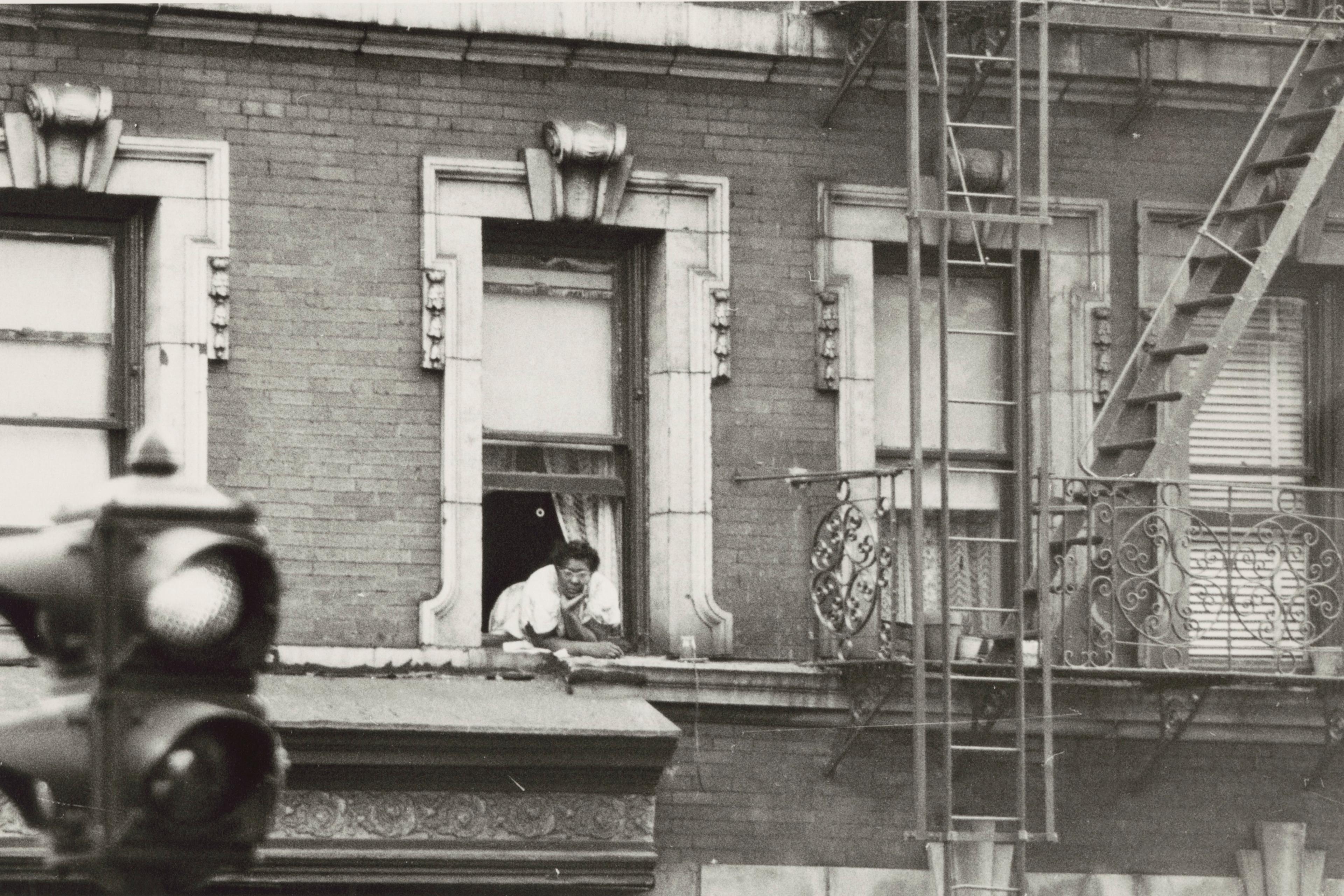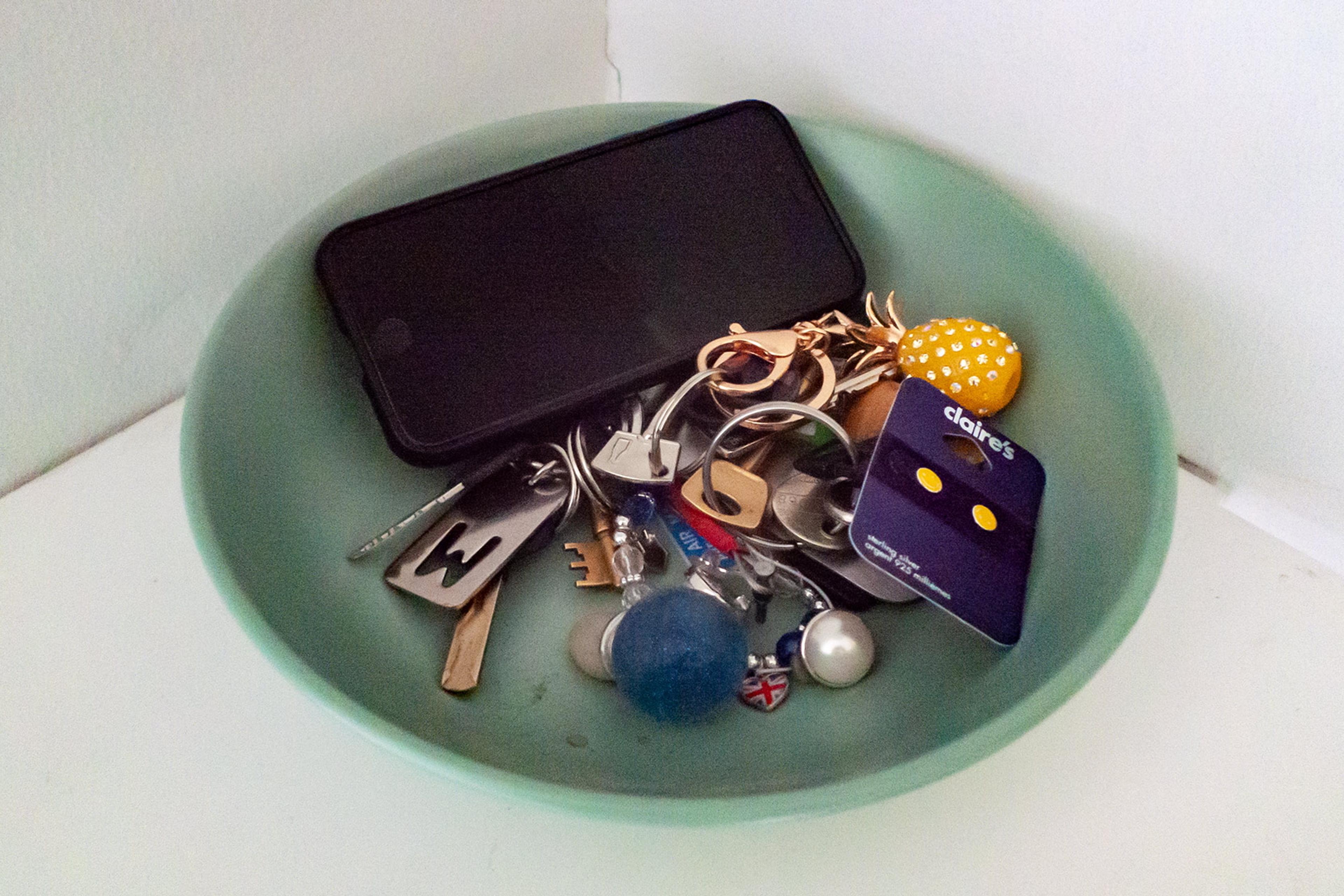When Japan entered its ‘lost decade’ in the early 1990s – a prolonged period of economic stagnation, disillusionment and social unravelling – reports began to spread of individuals who had isolated themselves in their homes and bedrooms, ceasing all participation in work, education and social life. These recluses came to be known by the neologism hikikomori, derived from the Japanese verbs hiku (to pull) and komoru (to seclude oneself), literally ‘to pull inward’. Initially regarded as an anomaly largely involving young men quietly supported by their parents, typically their mothers, the hikikomori phenomenon gradually came to be recognised as something far more widespread, affecting men and women across nearly all age groups.
Today, estimates suggest that around 1.5 million Japanese, just over 1 per cent of the population, could be considered hikikomori. Nor is the phenomenon confined to Japan: similar cases have been reported in South Korea, Italy, Spain, China, France, Argentina and the United States. Yet, despite its growing ubiquity, there remains little consensus on what hikikomori actually is or what causes it. That lack of clarity makes the prospect of a ‘cure’ all the more elusive.
Some view it as a state rather than a syndrome. Others attribute it to underlying or undiagnosed psychiatric conditions such as anxiety, schizophrenia, depression or social phobia. Certain medical professionals have even sought to incorporate ‘hikikomori’ into a psychiatric framework, advocating for its inclusion as a new diagnosis in the Diagnostic and Statistical Manual of Mental Disorders. In popular media, hikikomori are often portrayed as child-like and incompetent, their withdrawal attributed to laziness, poor coping skills or an inability to internalise social norms. Consider the Japanese manga and anime series NHK ni Yōkoso! (‘Welcome to the NHK!’), which follows a recluse depicted as a bedridden otaku (someone obsessively immersed in anime and gaming) who avoids adult responsibilities and begins to change only after his parents cut off financial support. Or consider the widely used term ‘parasaito shinguru’ (a transliteration of ‘parasite single’), coined in the late 1990s by the sociologist Yamada Masahiro to describe apparently selfish and immature unmarried adults still living with their parents.
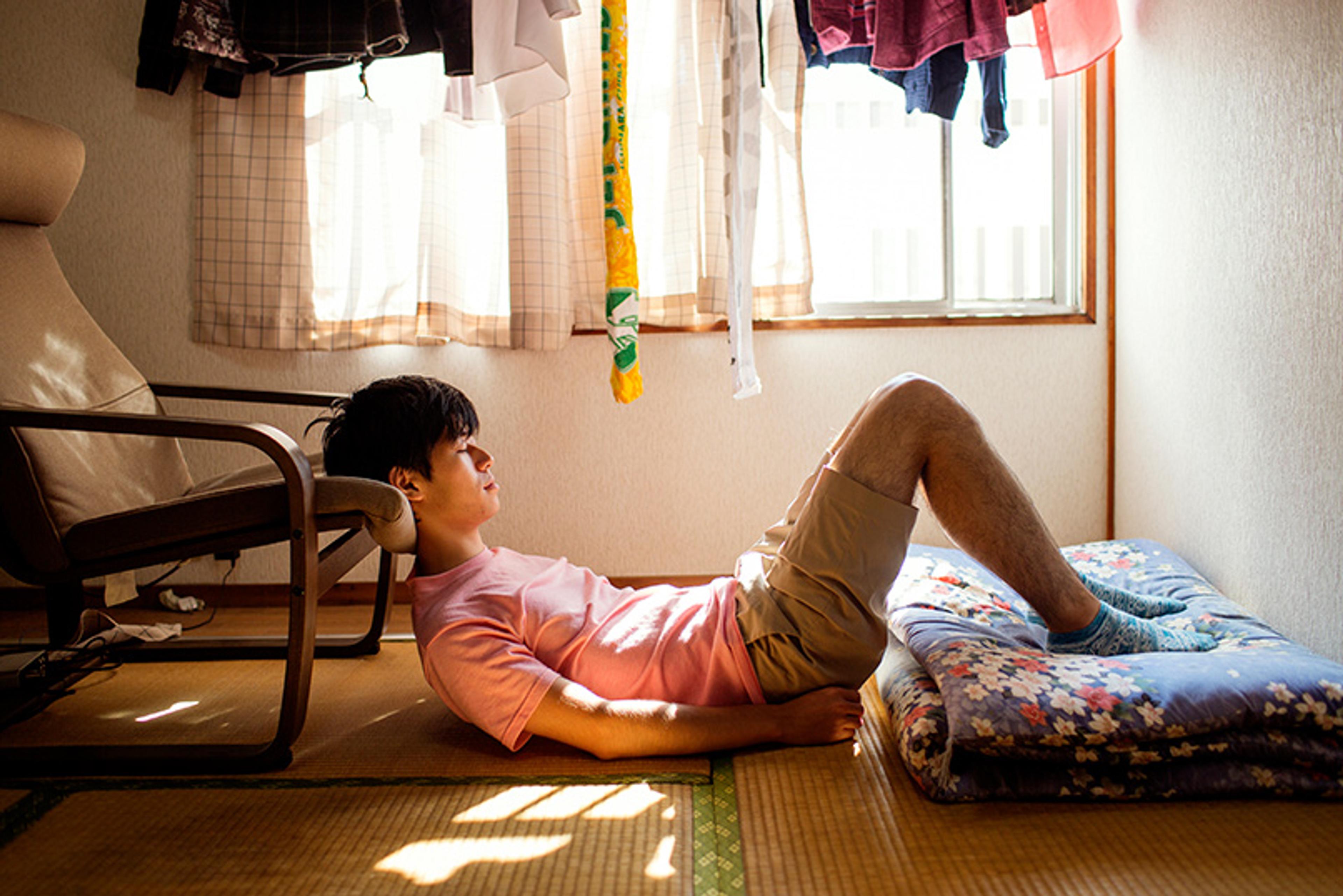
Chujo has been a hikikomori for two years. He dreams of becoming an opera singer, but his family wants him to join the family business. All photos 2018 © Maika Elan
While differing in emphasis, most explanations converge on the same idea: becoming a hikikomori is essentially a personal problem arising from an issue of psychology or even a moral failing. While differing in emphasis, most of these interpretations share a common thread: they treat hikikomori as a psychological or moral divergence, locating the problem squarely within the individual. In doing so, they read the isolation back into the person’s interior. But in ‘the age of loneliness’, as some have called our current era, how justifiable is that explanation?
Seeking answers, I went to Japan, visiting one of the hundreds of hikikomori care facilities that have emerged across the country in recent decades, offering information and help – or the promise of total rehabilitation. As a researcher, I arrived with a clear objective: to learn about the hikikomori phenomenon and its treatment. What does it really mean, I wondered, to be ‘rehabilitated’? And how do you cure something that escapes formal diagnosis?
On a cold morning in the winter of 2024, I arrived at a train station in central Japan, where I was picked up by a woman in her early 30s I’ll call Fumiko, who has been working for several years at one of Japan’s many hikikomori rehab centres. She would act as my guide. In the preceding months, the director of the centre where she works had granted me permission to observe and study their rehabilitation programme – which they refer to as a ‘school’ – as part of my research.
From the station, Fumiko drove me through the city to a building on the very outskirts of town, neighboured by suburban houses, a river, a stretch of inconspicuous farmland and a small factory with a fading façade.
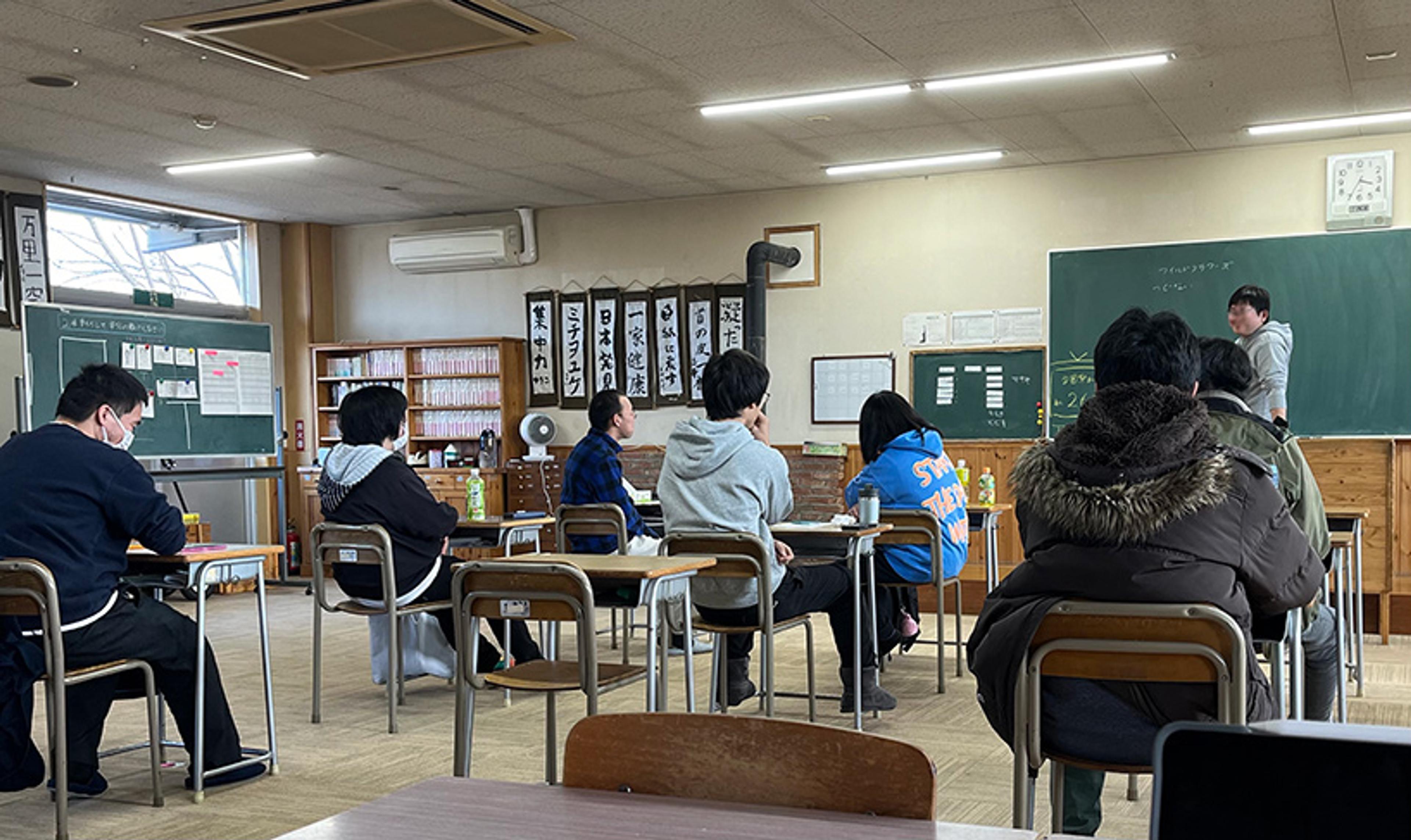
The ‘classroom’. Photo supplied by the author
Inside, I met seven staff members sitting downstairs. Fumiko then led me upstairs to a ‘classroom’. As she slowly opened the door, I saw a young man – partly hidden behind a face mask and a bulky ski jacket – standing in front of a blackboard. Before him sat several people at small desks, each spaced about a metre apart, their backs turned toward us.
The second floor housed the tiny, windowless men’s rooms. There was no heating inside
As the young man let out a hesitant gasp, the others turned around to look at us. I was met by the so-called hikikomori who had come here for treatment: a group of men and women ranging from teenagers to those in their early 30s. After briefly introducing myself, I found a seat at the back.
In the 10 days that followed, I became part of life at the centre. The daily schedule was structured with near-monastic precision. We were woken at 7:30 am, called to breakfast an hour later, and summoned to class at 9:30 by the ringing of a school bell. The bell also marked the start and end of lunch, and rang once more at 4 pm, signalling the end of the school day and the beginning of dinner preparations and cleaning – tasks routinely performed by the residents themselves. The only deviations from this rhythm were weekly gym sessions on Wednesdays and occasional outings, such as work visits to a nearby farm.
The dormitory consisted of a small living room with a television, an adjacent kitchen, and a hallway leading to the women’s quarters at the back. Upstairs, the second floor housed the tiny, windowless men’s rooms. There was no heating inside, and the temperature can drop below freezing during winter.
During my time in the centre, I asked the residents about their life stories. Their accounts varied widely, but a common thread emerged: after a period of fear, trauma or stress, retreating served to restore peace. It was a means of feeling safe again. While the initial moment of withdrawal was often remembered clearly, explaining why it continued for so long was far more difficult. My conversation partners would pause, their expressions growing vacant, eyes drifting into the distance. The answer seemed to elude them. It was as if unnamed, diffuse forces had quietly pulled their lives in this direction.
Contrary to the common stereotype of hikikomori as those who simply prefer comfort over responsibility, most of those I spoke with expressed a deep wish not to be a hikikomori. Many described their condition as a state of being stuck, in which every day felt like a struggle. A deep sense of guilt marked their shared experience: guilt that they had let down their parents, their families and society at large. To me, they seemed tired and sad, quietly hoping that their time at the rehabilitation centre would lead to a better life. How did the centre make this better life possible?
Classes typically involved arts and crafts, acting exercises and public speaking. Yet these sessions seemed less about education than about keeping residents occupied. The classes often felt improvised, with little structure or continuity. Curious to understand the rationale behind the programme, I sat down with the centre’s founder, asking him to describe its underlying philosophy. He summed it up succinctly: ‘When people cannot follow rules, they will eventually become hikikomori. When people – especially adults – are unfamiliar with rules, they’re unable to adapt to places like work. That’s why, in this school, we first teach them to follow rules.’
Even small acts of assistance, such as helping someone do their laundry or dishes, were not allowed
Beneath his reasoning lay a deeper conviction that social integration depends not on mutual understanding, but on submission. It echoed a broader cultural logic in Japan, one that often frames mental struggle as something to be endured. Wellbeing is often seen to hinge on mindset – on resilience, perseverance and the quiet ability to accept one’s fate. This way of thinking remains pervasive, especially in the case of hikikomori who are frequently portrayed as lazy or morally weak. As the founder put it: ‘I aim to make the students emotionally tougher so that when they fail, they will be able to rise again.’
The purpose of the classes, then, was to instil (or enforce) qualities deemed essential for survival, such as discipline and independence. This ethos extended into the daily life of the centre. Residents were expected to be self-reliant and were actively discouraged from helping one another with routine tasks. Even small acts of assistance, such as helping someone do their laundry or dishes, were not allowed. In this way, an ideal of individual responsibility and resilience was firmly instilled.
Even the dormitory rooms were part of the curriculum. Their discomfort served a purpose. When I told Fumiko how freezing my room was, she responded without hesitation: the discomfort was intentional. It was meant to nudge residents out of their isolation and into the heated common areas, where television and social connection awaited.
Care, I began to conclude, did not mean comfort, warmth or recognition. It meant obedience. Here, the self was something to be corrected, not understood.
Hikikomori is not a formal diagnosis, which means there is no agreed definition of recovery. As a result, rehabilitation centres can create their own definitions of care and ‘cure’, usually shaped by the expectations of parents who have enrolled their children for treatment. In this centre, progress was equated with self-reliance and personal responsibility. Some residents were even guided – over months or years – toward employment in factories, on farms or for the postal service. But it was never clear whether this independence would ultimately shield them from the forces that had first driven them into the isolation that came to define them.
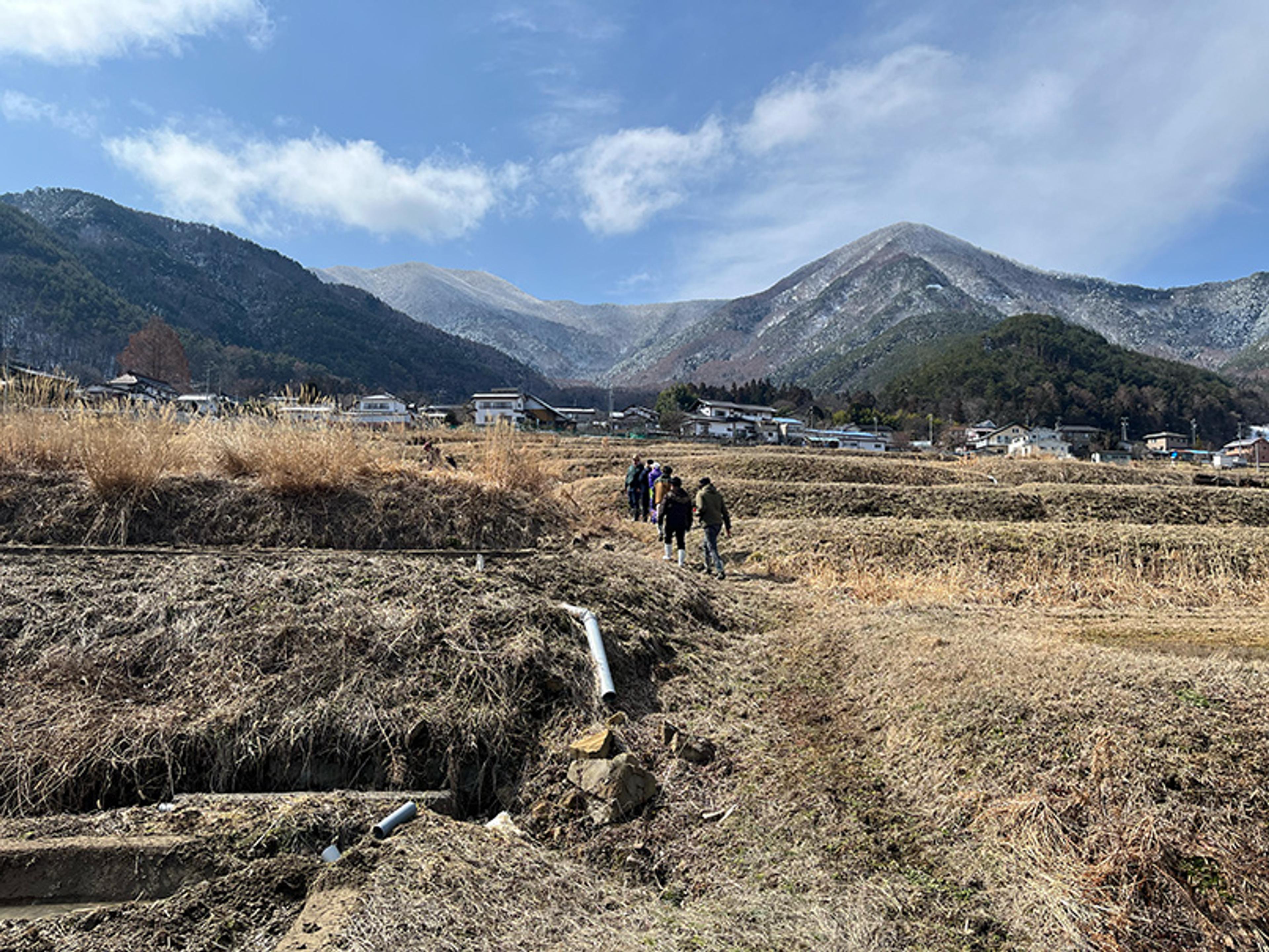
Working at a nearby farm. Photo supplied by the author
One former resident I’ll call Miyuki, a woman in her early 30s who was eventually employed part-time at the centre, told me how she now lived with two selves. Outwardly, she had re-entered society. She had a part-time job and followed routines. But she had not been ‘cured’. Instead, she now lived alongside the hikikomori version of herself. ‘I recognise that I am both now and then,’ she told me. ‘Even now, I often stay at home during the holidays. I do not have any friends or family. So I still feel like I’m a bit of a hikikomori.’
Rehabilitation may make them independent, but it does not necessarily restore a sense of belonging
‘Recovering’ by becoming independent did not necessarily end her social isolation. Employment may have helped her shed the ‘hikikomori’ label, but it didn’t resolve the deeper condition. For people like Miyuki, one form of isolation simply gives way to another. This is the deeper issue at the heart of the hikikomori problem.
Today, close to 40 per cent of households in Japan are single-person homes; and even among those who work, the so-called flexibilisation of the labour market has made formerly tight-knit work relationships – sometimes referred to as shokuba kazoku (literally ‘work families’) – increasingly rare. And it’s not just in Japan. People everywhere are becoming more socially isolated. Hikikomori, then, has become a label for social failure, naming those who appear to have a pathological inability to adapt, to work or to participate in a productive society. Rehabilitation may make them independent and employable, but it does not necessarily restore a sense of belonging or connection.
In this new period of virtualisation, precarious labour and vanishing communities, hikikomori reveal the underlying logic of our changing societies: participation counts only when it is tied to productivity. They are not simply outliers who have cut themselves off from the world, revealing the extremes of isolation. Instead, they show us the values that many of us share in our age of overwork and loneliness. That’s how Japan’s hikikomori, once dismissed as anomalies, now appear as mirrors reflecting the estrangements felt by countless others – regardless of whether they have a job.
